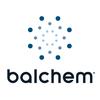Explore all the information on
Vitamins and minerals in dairy cattle nutrition
Welcome to the page about Vitamins and minerals in dairy cattle nutrition of Engormix; a source of knowledge on Vitamins and minerals in dairy cattle nutrition.
Introduction Dairy cows experience massive metabolic demands to support lactation. They adapt their metabolism to do so, including uncoupling of the somatotropic axis (Baumgard et al., 2017) with peripheral insulin resistance and increased lipolysis to fuel milk production. However, cows are challenged by a transient decrease in feed intake resulting in negative energy and protein balance in early lactation, and short-duration but substantial...
Comments : 0
Recommendations: 1
Higher trace mineral cost and increasing concern over trace mineral excretion into the environment make this strategy even less attractive. Feeding KeyShure® can help overcome the effects of antagonists, thus supporting optimum performance and decreasing mineral excretion into the environment.
...
Comments : 0
Recommendations: 0


Targeted Nutrition for Lower Nitrogen Output and Higher Dairy Stability
Suggested link
Antagonisms are organisms and processes within the animal that negatively impact nutrient absorption, with the ability to impact animal protein production in a number of ways. Hear what Dr. Heather Tucker, Ruminant Nutrition Research Manager at Novus International, has to say about it and how to combat antagonism with Mintrex, a bis-chelated mineral...
Comments : 3
Recommendations: 10
Introduction Historically, most nutritionists have given little consideration to the cost of vitamins A, D, and E. Cows needed them and even at high supplementation rates, cost per cow per day was reasonable. However, because of a fire at a chemical factory in late 2017, worldwide production of feed grade vitamin A has been reduced by more than 40%. Production of vitamin E has also been reduced because an intermediate that was produced at the factory with the fire cannot be...
Comments : 6
Recommendations: 4
.jpg&w=3840&q=75)

Protected Amino Acid Strategies: From Prepartum to Peak Lactation
Suggested link
Introduction Economic impact of oxidative stress on the profitability of dairy cows and calves: In the most simplistic terms, the body (humans and animals) could be compared to a medium in which millions of chemical reactions take place with the support of food energy. These reactions are the basis of life without which life will cease to exist. Thus, the body could simply be called the fire of life because oxygen is one of the main substances required by humans and...
Comments : 7
Recommendations: 6
Pakistan is at number 4 th among the top milk producing countries of the world, with an annual milk production of over 33 billion liters. The milk produced within the Pakistan is due to increased number of animals, not due to high yield of milk on animal basis. Very low production on per animal basis is due to malnutrition in our dairy animals. Provision of balanced ration containing supplements / nutrients, vitamins and minerals is necessary for the growth and production of dairy...
Comments : 24
Recommendations: 1
To meet the challenges of our growing population sustainably, livestock feeding practices need to be improved. Optimized protein supply plays a major role, which is where Mepron® from Evonik comes in. Learn more about how your farm can benefit from this important feed additive in this short video....
Comments : 24
Recommendations: 11
Introduction Feeding high-producing cows continues to challenge dairy farmers and nutritionists. Also, dairy profit margins vary as milk prices and feed costs shift yearly. Feed costs represent the largest input cost to produce milk (estimated to be 35 to 50 percent). Feed additives are a group of feed ingredients that can cause a desired animal response in a non-nutrient role, such as pH shift, growth,...
Comments : 4
Recommendations: 0


Targeted Nutrition for Lower Nitrogen Output and Higher Dairy Stability
Suggested link
Introduction A number of micronutrients have been shown to affect various aspects of immunity in cattle. The interactions between nutritional status, immunology and disease resistance are extremely complex. Insufficient contents of micronutrients in animal diets have been related with low disease resistance and decreased disease resistance. A balanced supply of micronutrients, such as vitamins E, β-...
Comments : 8
Recommendations: 1
To optimize the growth and production of animals, we have long realized good nutrition is key. Trace mineral supplementation has been simplified to strictly meeting the parts-per-million requirements set out in the nutrient requirement tables, with little attention given to the form in which the mineral is provided. Recently, there has been more interest and research on the influence trace minerals have on the immune system, with specific interest given to...
Comments : 8
Recommendations: 3
.jpg&w=3840&q=75)

Protected Amino Acid Strategies: From Prepartum to Peak Lactation
Suggested link
In 1817, selenium (Se) was isolated for the first time by Berzelius. At that time little was known about its biological function, until its nutritional requirement was revealed about 140 years later by Schwarz and Foltz in 1957...
Comments : 0
Recommendations: 2
Key information Mepron® is a dust free mini pellet (1.8 * 3mm) with a very high degree of durability and low humidity with min. 85 % content of DL-methionine in a rumen protected form. Its specific gravity (1.2 kg/L), bulk density (650 kg/m 3 ) and angle of repose (21°) assure excellent flow and conveying properties. Using conventional mixing techniques, the product can be mixed with many types of feed ingredients quickly (2.5 min)...
Comments : 1
Recommendations: 6
Erin Horst (Iowa State University) discussed leaky gut in lactating Holstein cows and the consequences of feed restriction, as well as the effect of dietary zinc hydroxychloride, during the 8th Symposium on Gut Health in Production of Food Animals in St. Louis, USA....
Comments : 1
Recommendations: 7
Introduction Proper sampling of ration ingredients and submitting those samples for nutrient analysis to a good lab are essential components of diet formulation. The relative importance of sampling, analytical, and real variation on overall variation in nutrient composition data of ingredients has been discussed at previous conferences (Weiss et al., 2012; Weiss et al., 2014). Sampling variation was an equal or greater source of variation than was real month-to-month...
Comments : 5
Recommendations: 6


Targeted Nutrition for Lower Nitrogen Output and Higher Dairy Stability
Suggested link
Introduction There is increasing pressure at federal, state and local levels about nutrient waste and pollution relative to N, P, CH4 and CO2 discharges from the animal industry. Large animal operations have come under more intense scrutiny than small animal operations, with CAFO regulations being put in place. This has put increasing pressure on producers and us as nutritionists to provide some of the...
Comments : 3
Recommendations: 8
Introduction: Dairying has been considered to be one of the livelihood options for rural poor people, especially for landless, marginal, and small farmers in India and world. Generally, the productivity in dairy sector is low and smallholders are constrained by lack of access to quality feed. Although professionals have pointed out the importance of feeding, the ground realities or practices about concentrate feeds is entirely different. Due to shrinkage of grazing land and...
Comments : 0
Recommendations: 2
.jpg&w=3840&q=75)

Protected Amino Acid Strategies: From Prepartum to Peak Lactation
Suggested link
The mineral complement of the animal and, to a large extent, the human diet is the fraction that historically we have made little attempt to supply in the form in which it occurs in natural mammalian foods. For the most part the strategy of using inorganic minerals, ie. oxides, sulfates and carbonates, has successfully provided the nutrients needed for growth and production of domestic livestock. Limitations in bioavailability or metabolism of inorganic sources due to either chemical or...
Comments : 4
Recommendations: 1
Objective: The objective was to compare Ca serum concentration and frequency of severe [Ca < 2.0 mmol/L] and moderate [Ca < 2.125 mmol/L] subclinical hypocalcemia (SCH) in cows supplemented according to the Dietary Cation Anion Differences (DCAD) principles or with synthetic zeolite. Materials and methods: The trials were performed in two large commercial farms in US and blood samples were taken within the first 24 hours after...
Comments : 0
Recommendations: 0
Introduction Most cows undergo some level of hypocalcemia in the immediate postpartum period, with 40 to 70% of multiparous cows developing subclinical hypocalcemia (SCH; Reinhardt et al., 2011; Caixeta et al., 2015; Neves et al., 2017). Supplementing zeolite A in prepartum rations improves Ca status during the peripartum period (Thilsing et al., 2006; Pallesen et al., 2008). In European studies, feeding zeolite A for the 2 weeks prior to calving resulted in...
Comments : 0
Recommendations: 3
Introduction Most cows undergo some level of hypocalcemia in the immediate postpartum period, with 40 to 70% of multiparous cows developing subclinical hypocalcemia (SCH; Reinhardt et al., 2011; Caixeta et al., 2015; Neves et al., 2017). Feeding prepartum rations low in Ca can improve Ca status postpartum (Kichura et al., 1982) but is difficult to achieve with commonly used feedstuffs in the US (Goff, 2006). In European studies, feeding zeolite A for the 2...
Comments : 0
Recommendations: 0



















